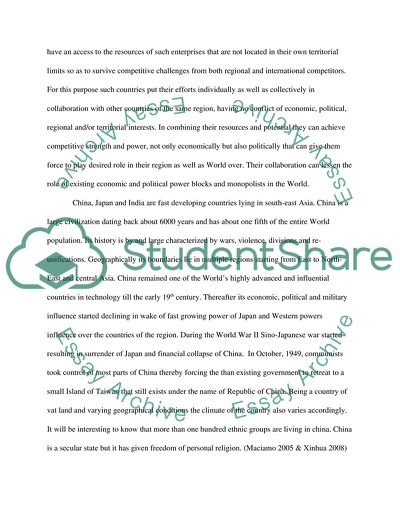Cite this document
(“The Possibilities of Three Asian Giants: China, Japan, and India Research Paper”, n.d.)
The Possibilities of Three Asian Giants: China, Japan, and India Research Paper. Retrieved from https://studentshare.org/politics/1724045-what-are-the-possibilities-of-three-asian-giantschinajapan-and-india-together-forming-a-concert-of-power-that-leads-the-world
The Possibilities of Three Asian Giants: China, Japan, and India Research Paper. Retrieved from https://studentshare.org/politics/1724045-what-are-the-possibilities-of-three-asian-giantschinajapan-and-india-together-forming-a-concert-of-power-that-leads-the-world
(The Possibilities of Three Asian Giants: China, Japan, and India Research Paper)
The Possibilities of Three Asian Giants: China, Japan, and India Research Paper. https://studentshare.org/politics/1724045-what-are-the-possibilities-of-three-asian-giantschinajapan-and-india-together-forming-a-concert-of-power-that-leads-the-world.
The Possibilities of Three Asian Giants: China, Japan, and India Research Paper. https://studentshare.org/politics/1724045-what-are-the-possibilities-of-three-asian-giantschinajapan-and-india-together-forming-a-concert-of-power-that-leads-the-world.
“The Possibilities of Three Asian Giants: China, Japan, and India Research Paper”, n.d. https://studentshare.org/politics/1724045-what-are-the-possibilities-of-three-asian-giantschinajapan-and-india-together-forming-a-concert-of-power-that-leads-the-world.


